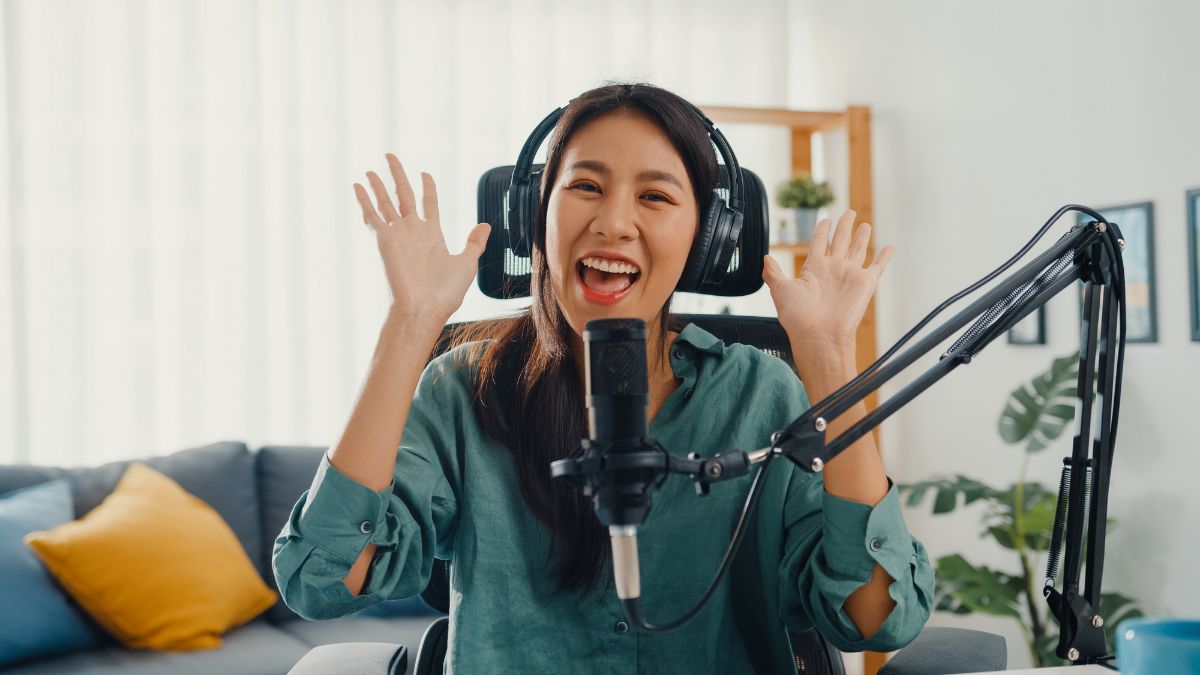Nowadays, recording content from the comfort of your home is easier than ever. The affordability of audio equipment and all the online resources allow your creativity to roam freely in the realms of audio content creation. Despite the advanced technology, there is still a lot you can do to increase the quality of your home recordings to the maximum.
Getting high-quality content starts from correctly sound treating your recording space and minimizing the damage in post-production. This might sound overwhelming. However, it shouldn’t as many audio creation platforms which you are most likely going to use for editing your content include background noise removers that do a terrific job. Podcastle’s Magic Dust is one great example of a single-click noise removal. So whatever you’re working with during recording, keep in mind that there’s advanced software to help you fix whatever went wrong.
Set up the recording space
No, the ideal recording space is not the empty garage or sibling’s vacant bedroom. Surprisingly, the more rugs and pillows in the room the better. Flat hard surfaces and corners produce the most echoes and resonances so you’re better off in a carpeted room with a lot of furniture (desirebly soft). Record as far from windows as possible, perfectly in the middle of your house to avoid noise from all sides.
A lot of the unwanted noise can be avoided if you properly treat the room you’re planning to record in. Porous bass traps are a great investment if you’re planning to buy anything at all. And if you’re not, you can cover hard surfaces with blankets, fabric and pillows. Mattresses are another alternative for foam panels which help absorb unwanted echoes in the mid and high frequencies.
Another thing you can do to test your work is the clapping test. Clap loudly from a few different spots around the room and evaluate what you hear. You want a pleasant reverb rather than a harsh ringing. You can assess the sound in this way as you continue to treat the room.
Get the right equipment and place it right
When choosing a microphone for your home studio, there are many factors to consider. The most important factor is the type of sound you want to capture. Dynamic microphones are great for the outdoors and any environment really. They don’t require any external power and can be plugged straight into any audio interface.
If you’re recording your podcast episode in a studio, go with a condenser mic. These ones do a great job capturing the richness in the voices. If your condenser is also connected via XLR, you’ll also need phantom power. Another downside is that with the richness also comes ambient noise. While you can edit out some of the disruptions with podcast audio editing software, as you can see there are a lot more nuances when it comes to condenser mics.
When it comes to plugging your podcast microphone into something before you start recording, there are two ways to go about it.
XLS microphones are condenser mics that feature many different connectors to connect to the audio interface you’re using. They are good for capturing quiet sounds and also have a wider frequency response, which means they can capture a wider range of sound frequencies. This makes them a better choice for recording studio-quality audio.
USB mics, on the contrary, don’t require much experience with sound. You plug them into your laptop, hit record on the podcast recording platform and you’re all set. The simplicity and affordability make these mics a great choice regardless of your setup. That being said, Windows PC isn’t performing that well when it comes to handling several USB audio source connections.
That’s why in more advanced setups and situations we’d suggest going with an XLR connector. While it requires more equipment and knowledge, you have more freedom in the number of microphones you can use.
Test your setup
Recording quality audio from your home isn’t all that complicated. As you can see a little bit of preparation goes a long way. And so does testing. Make sure to listen to your test recording using different headphones and in various environments. Whether you’re looking to spend a few hundred, a few thousand, or none at all, now you know that making quality content is a possibility and not just an option.

